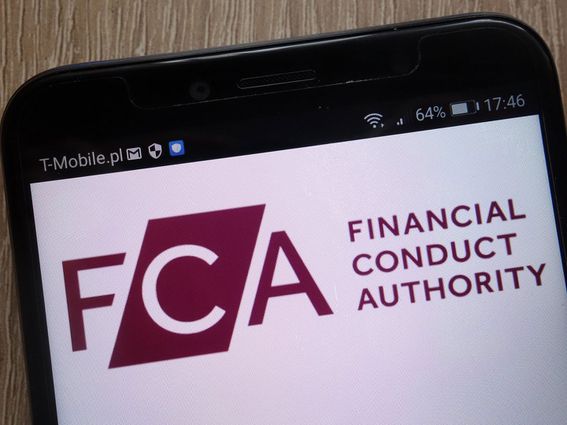The company plans to look for acquisition opportunities in the “highly fragmented” market, CEO Brandon Mintz said.
UK Financial Regulator Expands Enforcement Against Crypto ATMs to East London
The FCA began enforcing its proclamation that crypto ATMs are illegal last month, inspecting sites in the northern city of Leeds.
UK Financial Regulator Takes Enforcement Action Against Crypto ATM Operators
The financial watchdog has teamed up with West Yorkshire Police to tackle crypto ATM operators in the city of Leeds
Crypto ATMs emerging as popular method for crypto scam payments: FBI

The FBI says alongside regular methods of payment such as wire transfers and prepaid cards, crypto ATMs are also becoming a prominent tool for crypto investment scammers.
Number Of Crypto ATMs Installed Worldwide Reaches New Milestone
With crypto adoption advancing rapidly over the last year, the installation of new crypto ATMs worldwide has also followed this accelerated rate. The number of countries where crypto ATMs are available remains on the rise too. Over the course of 2021, a large number of ATMs were installed as more countries accepted them. This time around, the number of crypto ATMs in the world has hit a new high, indicating that adoption remains high.
39,000 Crypto ATMs Worldwide
The rapid growth of crypto worldwide is embodied in the number of ATMs around the globe. This month, the space celebrated a new milestone in regards to these machines, which have now surpassed a total of 39,000 ATMs installed worldwide.
Data from Coinatmradar shows that the number now sits at 39,015 ATMs installed across 78 countries. Most of the installations have happened in the last two years. Back on January 1st, 2020, the total number of crypto ATMs worldwide sat at 6,364 ATMs. Growing more than 513% in the time since then to its current level.
Market cap surpasses $1.1 trillion | Source: Crypto Total Market Cap on TradingView.com
During this time, the number of ATM manufacturers has also grown more than 100%. It is now sitting above 15,000 manufacturers from the 2,000 that dominated the space back at the beginning of 2020. This has facilitated competition in this industry, and the cost of using crypto ATMs has plummeted as a result.
The United States Continues To Dominated
Most of the growth in the installation of ATMs has been happening in the United States. This is due to the acceptance rate of cryptocurrencies in the region and also the tendency to try out new tech. For this reason, more than 80% of all crypto ATMs installed worldwide have been in the United States.
It currently has a total of 34,301 ATMs out of the 39,015 ATMs that are currently live. It puts it at approximately 88% dominance in this industry. No other country comes close in this regard, and the United States has more crypto ATMs than all the other 77 countries combined.
Other countries which are seeing higher rates of installations include Canada, Spain, and El Salvador. The United Kingdom is interesting in this regard because while other countries are seeing the number of available crypto ATMs rise over the last two years, it has seen its numbers plummet. Currently, there are only about 22 ATMs in the UK.
There are currently 46 producers around the world with a total of 615 operations. As for businesses who bitcoin to cash and cash to bitcoin services, it currently sits at 324,114, with the US making up about half of this number.
Featured image from Gadgets 360, chart from TradingView.com
Follow Best Owie on Twitter for market insights, updates, and the occasional funny tweet…
After four years, Japan brings back its first crypto ATM

Local exchange Gaia Co. is set to roll out crypto ATMs in Tokyo and Osaka and has outlined plans for 130 of them over the next three years.
Reports Show Government Intends To Imply Stricter Regulations On Cryptocurrency ATMs
In a press release yesterday, the federal agency stated that crypto kiosks, or cryptocurrency ATMs, played a major role in the increasing crimes. The United States GAO (Government Accountability Office) blames crypto kiosks for increasing drug trafficking and human trafficking.
Their reason, however, was that cryptocurrency ATMs aren’t as restricted as crypto exchanges, making their transactions harder to track. The GAO projects that it can be more difficult to curtail illegal transactions as crypto kiosks are becoming more and more popular in the U.S. and worldwide.
Related Reading | Altcoins Are Encroaching On Bitcoin’s Dominance On Digital Payments
To salvage these impending problems arising from crypto kiosks, the GAO recommended that the Financial Crimes Enforcement Network (FinCEN) and IRS cooperate to place more effective regulations on crypto ATMs.
Total Market Cap declines by 3% on daily chart | Source: TradingView.com
While observing the challenges in battling crypto-related crimes, GAO explained that the lack of information about crypto kiosks restrains law enforcement’s capability to defeat crime.
Several Agencies Battle Crypto Crimes
In the report, GAO also observes how, globally, cryptocurrencies are used in facilitating crimes and trafficking. Also, agencies have arisen to resist the increase of crypto-associated crimes. These agencies include the Immigration and Customs Enforcement (ICE), U.S Postal Service (USPS), and even the Internal Revenue Service (IRS).
The Irregularities of Crypto Crimes
Although the study shows that crypto-related crimes have upsurged irregularly. Recently, a new report from the crypto research company showed the contrary. In the latter research’s findings, crypto crimes reached their lowest point in 2021-contrary to its increasing volume of the entire blockchain transactions in the year.
Thus, as cryptocurrencies become more adopted, crypto-related crimes will simultaneously increase. However, the expansion of overall crypto transactions is far-outperforming some criminal activity.
Crypto Kiosks And Human Trafficking
The GAO’s report showed that cryptocurrency has recently been adopted as a means of payment for human trafficking. By ‘human trafficking,’ we imply sex trafficking and labor trafficking. More commonly, sex traffickers now adopt cryptocurrencies as a payment option.
Crypto ATMs And Drug Trafficking
The report also stated that after the shutdown of Silk Road-the online dark web market—in 2013, the entire hidden web marketplace has become more secure. Thus, making the marketplace for illicit drugs more difficult for the law to detect. Again, this is because of the growth of smaller marketplaces.
Tightening Gaps Against Cryptocurrency ATMs
The GAO’s problem with cryptocurrency ATMs is that, although the ATM operators must be registered with the FinCEN, they don’t usually notify law enforcement agencies about their ATMs’ locations. That action impedes the federal agencies’ access to locate ATMs in areas stated as high-risk regions for financial crimes.
Related Reading | American Rapper Lil Baby On Holding Bitcoin And Ethereum Over Fiat
Thus, by increasing regulations on cryptocurrency ATMs, the GAO presumes that enforcing the government will access better information. Also, they will be able to locate potentially illegal transactions.
Featured image from Pixabay, chart from TradingView.com


